Protecting St. Augustine
It seems like 2018 has been the year of challenges for St. Augustine in Texas. It started with take all root rot and the required treatment of sphagnum peat moss back in the spring. Chinch bugs hit early with June’s heat, and gray leaf spot wasn’t far behind.
What’s been unusual is that gray leaf spot has stayed around much longer than usual, even up to the present time. And now brown patch is showing up right on schedule.
Telling gray leaf spot and brown patch apart…
Gray leaf spot is primarily a disease of hot weather. It causes drifts of yellowed grass amidst otherwise healthy, green parts of the lawn.
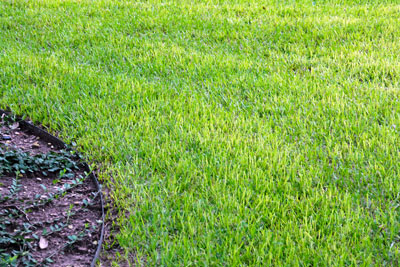
Gray leaf spot causes irregular “washes” of yellow across the lawn.
On closer inspection you can usually see angular brown or gray patches on the blades and even the runners if gray leaf spot is involved.
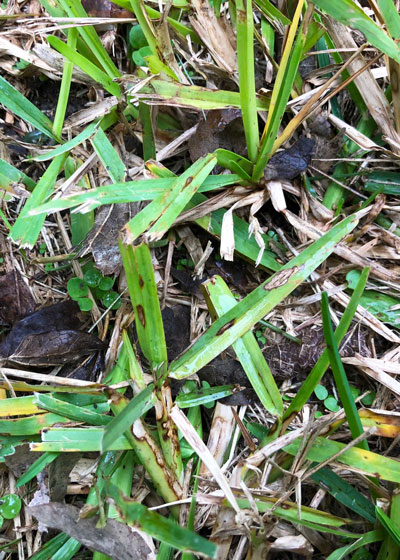
Closer look at blades of grass show angular lesions if gray leaf spot is involved. This photo is from a lightly tended part of the Sperry lawn near our county road just this past weekend.
It is most common in shaded, moist areas and following extended periods of rain. That may account for the fact that we’re still seeing it into October this year. Avoid watering in the evening.
Gray leaf spot should be abating soon, but if you’re still seeing it you probably should not apply nitrogen fertilizer the remainder of the fall.
Here is what Texas A&M has to say about gray leaf spot online.
By comparison, here’s brown patch…
Brown patch begins with 18- to 24-inch areas of yellowing blades. It usually doesn’t appear until temperatures fall into the low 60s, and most often it’s after an early fall rain (or if you water at night).
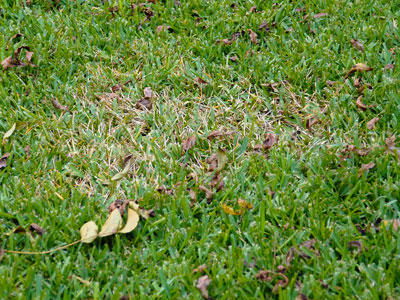
Brown patch is just starting to show up currently in many parts of Texas.
For the first few days the yellowing won’t appear to be in distinct circles, but within a week or so you’ll see characteristic rings of browning blades, almost as if someone had laid a metal garage can lid on top of the lawn for 24 hours, then picked it up.
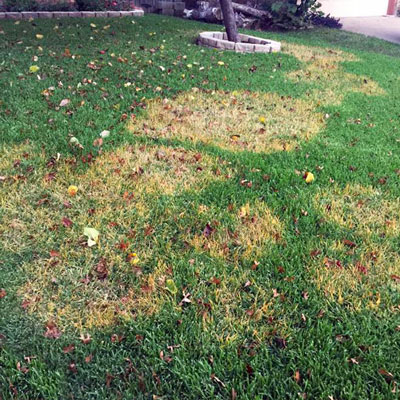
Within a few weeks the patches will be extremely noticeable. Brown patch only affects leaf blades. Given time, new green blades may even begin to appear. (See circle in lower left of photo.)
Blades pull loose from the runners quite easily when brown patch is involved. You can see where the disease has impacted the blades at the bases of their sheaths.
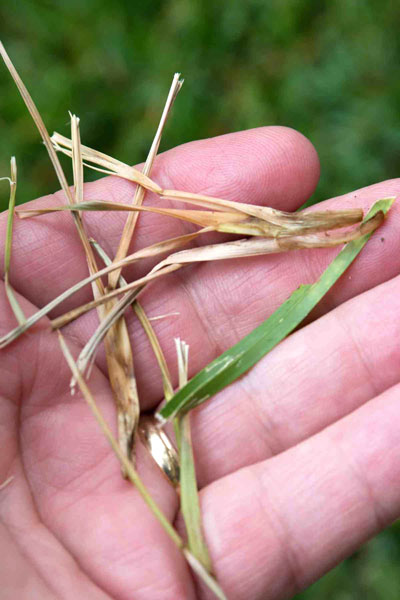
Brown patch attacks blades at their bases where they attach to the runners. They will pull loose easily from the runners.
Controlling brown patch involves watering only in the early morning so that grass will be dry overnight. Your local independent retail garden center or hardware store will have one or more fungicides that will stop its spread if you already are seeing it.
Here is information Texas A&M offers on brown patch.
